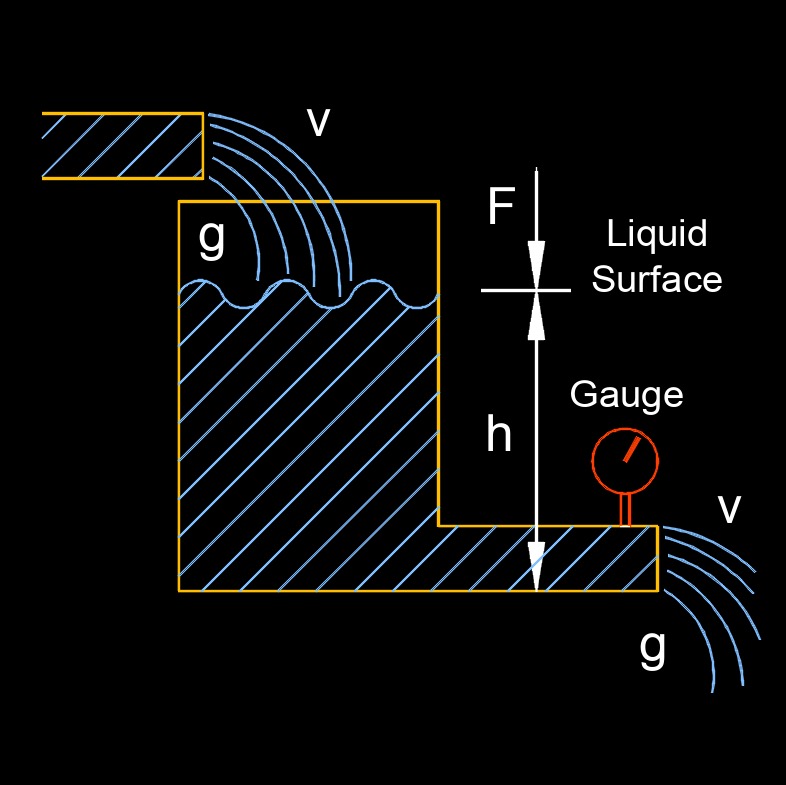Fluid Pressure
Fluid Pressure Formula |
||
|
\( p \;=\; \dfrac{ F }{ A }\) (Fluid Pressure) \( F \;=\; p \cdot A \) \( A \;=\; \dfrac{ F }{ p }\) |
||
| Symbol | English | Metric |
| \( p \) = Pressure (psi) | \(lbf\;/\;in^2\) | \(Pa\) |
| \( A \) = Surface Area | \(ft^2\) | \(m^2\) |
| \( F \) = Force on Fluid | \(lbf\) | \(N\) |

Fluid pressure is the force exerted by a fluid, such as a liquid or a gas, on the walls of a container or any surface with which it comes into contact. This force is the result of random motion and collisions of the molecules or particles that make up the fluid. In other words, fluid pressure is the result of the fluid molecules pushing against the walls of the container or any object immersed in the fluid.
The pressure of a fluid can vary depending on factors such as the density of the fluid, the depth or height of the fluid column (in the case of a static fluid like water), and the acceleration due to gravity. In a static fluid, pressure increases with depth according to Pascal's principle, which states that the pressure exerted at any point in a fluid is transmitted undiminished in all directions throughout the fluid.
Fluid pressure is used in physics and engineering and has numerous practical applications. For example, it is essential in understanding the behavior of fluids in hydraulic systems, determining the buoyant force acting on submerged objects, calculating the lift and drag forces in aerodynamics, and analyzing the operation of pumps, valves, and other fluid-handling equipment.

